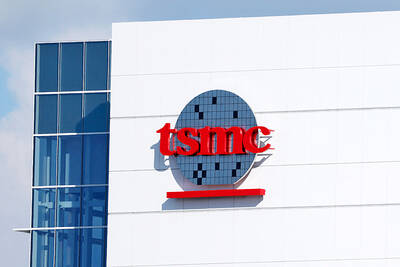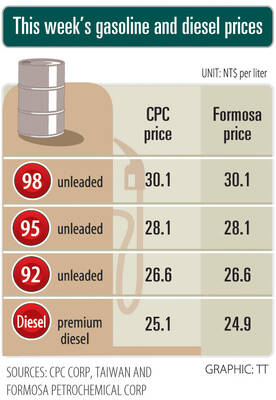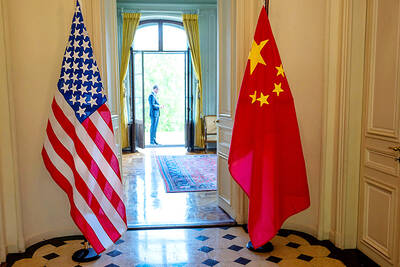Forget the bellhop. Meet the luggage robot.
It’s the first of several high-tech, sleek amenities guests encounter at the Yotel, a new hotel that aims to provide a trendy stay at an affordable price.
Purple lighting, throbbing music in the elevators and futon-like sofas that transform into lie-flat beds at the touch of a button help set the mood.
Or maybe they just distract you from the tiny size of the rooms. At 15.8m2, perhaps “room” is too generous a term. Yotel prefers to call them cabins.
Aircraft designers were hired to make the rooms feel larger than they are. The tiny desk doubles as a nightstand. An overhead shower fixture delivers water like rain, perhaps to make the stall (no tub) seem more spacious. Of course there’s no room for a fridge or minibar.
However, guests are not expected to hang out in their rooms. Yotel’s massive fourth-floor lobby includes four bars, a 650m2 outdoor terrace and a restaurant inspired by a sumo wrestling ring
Yotel chief executive Gerard Greene is seeking guests that are “young at heart” and considers his property to be the “iPod of the hotel industry.” Some of the design elements are jarring, even to the man behind them.
Pointing to a mustard-colored pullout sofa in one of the larger rooms, Greene said, “I think I must have been jet-lagged — jet-lagged or hung-over — when I chose that color.”
Yotel opened its first hotels in 2007 at two of London’s airports followed the next year by one at Amsterdam’s airport. The chain aims to combine the efficiency of airplane space with the concept of tiny Japanese capsule hotels. The New York hotel is the first non-airport location and the first Yotel outside of Europe. At 669 rooms, it is also the largest hotel to open in New York since 2002, according to the city’s tourism authority.
Everything here is self-serve.
The 6m-tall robotic arm at the entrance automatically stores bags in lockers for guests who want to wonder around the city after the 11am check-out time. At check-in, airport-like kiosks spit out room key cards and an invoice. Don’t worry: Humans are standing by to assist the technologically challenged.
Instead of room service, prepared food is available from the concierge desk, dubbed Mission Control, which also sells hotel souvenirs like metallic Yotel water bottles.
However, the real heart of the hotel is the action-packed terrace, already fast on its way to become one of this summer’s hottest outdoor bars. The varied tapas-style menu of small plates is tasty, but the tab can quickly add up. It would be a shame for a meal and drinks there to cost more than the room upstairs.
My room went for an introductory rate of US$149, or US$179.47 with tax. After August, Yotel is looking to offer rooms with a base rate in the US$200 to US$250 range. More expensive suites have hot tubs and rotating beds straight out of an Austin Powers movie. They go for US$1,000 or more a night.
The Yotel throws in free Wi-Fi, domestic phone calls, morning yoga and muffins and coffee for breakfast. For the really budget-conscious, each floor has a communal kitchen area with a sink and microwave.
New York has the highest average room rate in the country: US$236 a night in April, according to research firm STR.
On the same night that I slept at the Yotel, across town the Pod Hotel was offering a room with a double bed and private bathroom for US$229. (Yotel’s private shower is only separated from the bed by a glass wall and curtain). The La Quinta Manhattan and Ramada Eastside both had rooms with a queen bed for US$194.99 plus tax and a private room at the Times Square Hostel with a shared bathroom was US$55 per person, based on two people.
The Four Seasons charges US$795 a night.
The Yotel is part of a new development that includes luxury apartments, theaters and stores on 42nd Street and 10th Avenue. The area is quickly gentrifying, but is not exactly tourist central, even though it is just two long avenues away from Times Square.
The low-rise buildings in the surrounding neighborhood lead to some spectacular views, especially on the higher floors. Unfortunately my room — cabin 1605 — overlooked the entrance to the Lincoln Tunnel, but it did provide me with a sliver of the nearby Hudson River and, in the distance, I could also see the growing new World Trade Center tower. Other rooms have better views of the river or the midtown Manhattan skyline.
Inside the tiny room were two drawers that could fit about three shirts each, six hangers, a shelf, a safe, hair dryer and flat-screen TV with a plug to connect an iPod. Multi-use hand soap also does triple duty as shampoo and body wash. Spacious is never a word you would use to describe the rooms, but neither is claustrophobic.
Ultimately, the most pleasant surprise of my stay was a towel-warming rack squeezed in to the bathroom. As I came out of my shower, I suddenly felt like I was staying at the Four Seasons.
Well, just a tiny corner of the Four Seasons.

Real estate agent and property developer JSL Construction & Development Co (愛山林) led the average compensation rankings among companies listed on the Taiwan Stock Exchange (TWSE) last year, while contract chipmaker Taiwan Semiconductor Manufacturing Co (TSMC, 台積電) finished 14th. JSL Construction paid its employees total average compensation of NT$4.78 million (US$159,701), down 13.5 percent from a year earlier, but still ahead of the most profitable listed tech giants, including TSMC, TWSE data showed. Last year, the average compensation (which includes salary, overtime, bonuses and allowances) paid by TSMC rose 21.6 percent to reach about NT$3.33 million, lifting its ranking by 10 notches

SEASONAL WEAKNESS: The combined revenue of the top 10 foundries fell 5.4%, but rush orders and China’s subsidies partially offset slowing demand Taiwan Semiconductor Manufacturing Co (TSMC, 台積電) further solidified its dominance in the global wafer foundry business in the first quarter of this year, remaining far ahead of its closest rival, Samsung Electronics Co, TrendForce Corp (集邦科技) said yesterday. TSMC posted US$25.52 billion in sales in the January-to-March period, down 5 percent from the previous quarter, but its market share rose from 67.1 percent the previous quarter to 67.6 percent, TrendForce said in a report. While smartphone-related wafer shipments declined in the first quarter due to seasonal factors, solid demand for artificial intelligence (AI) and high-performance computing (HPC) devices and urgent TV-related orders

Prices of gasoline and diesel products at domestic fuel stations are this week to rise NT$0.2 and NT$0.3 per liter respectively, after international crude oil prices increased last week, CPC Corp, Taiwan (台灣中油) and Formosa Petrochemical Corp (台塑石化) said yesterday. International crude oil prices last week snapped a two-week losing streak as the geopolitical situation between Russia and Ukraine turned increasingly tense, CPC said in a statement. News that some oil production facilities in Alberta, Canada, were shut down due to wildfires and that US-Iran nuclear talks made no progress also helped push oil prices to a significant weekly gain, Formosa said

MINERAL DIPLOMACY: The Chinese commerce ministry said it approved applications for the export of rare earths in a move that could help ease US-China trade tensions Chinese Vice Premier He Lifeng (何立峰) is today to meet a US delegation for talks in the UK, Beijing announced on Saturday amid a fragile truce in the trade dispute between the two powers. He is to visit the UK from yesterday to Friday at the invitation of the British government, the Chinese Ministry of Foreign Affairs said in a statement. He and US representatives are to cochair the first meeting of the US-China economic and trade consultation mechanism, it said. US President Donald Trump on Friday announced that a new round of trade talks with China would start in London beginning today,